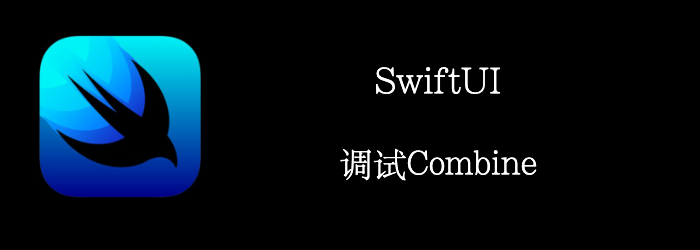 本章,我们将学习调试Combine Stream的三种方法。我承认这三个都有点基础。但是,它们是一个起点,应该足以帮助我们了解如何处理stream中的错误。
本章,我们将学习调试Combine Stream的三种方法。我承认这三个都有点基础。但是,它们是一个起点,应该足以帮助我们了解如何处理stream中的错误。
Getting ready
首先创建一个项目DebuggingCombine
How to do it…
我们将直接创建3个按钮,来尝试调试Combine的3种方式。
- 先创建一个包含3个事件的model
class ReactiveObject {
private var cancellableSet: Set<AnyCancellable> = []
func handleEvents() {
}
func printDebug() {
}
func breakPoint() {
}
}
- ContentView中加入3个按钮,调用这3个函数
struct ContentView: View {
var reactiveObject = ReactiveObject()
var body: some View {
VStack(spacing: 24) {
Button {
reactiveObject.handleEvents()
} label: {
Text("HandleEvents")
.foregroundColor(.white)
.frame(width: 200, height: 50)
.background(Color.green)
}
Button {
reactiveObject.printDebug()
} label: {
Text("Print")
.foregroundColor(.white)
.frame(width: 200, height: 50)
.background(Color.orange)
}
Button {
reactiveObject.breakPoint()
} label: {
Text("Breakpoint")
.foregroundColor(.white)
.frame(width: 200, height: 50)
.background(Color.red)
}
}
}
}
- 实现我们的3个函数
func handleEvents() {
let subject = PassthroughSubject<String, Never>()
subject
.handleEvents(receiveSubscription: {
print("Receive subscription: \($0)")
}, receiveOutput: {
print("Received output: \($0)")
}, receiveCompletion: {
print("Receive completion: \($0)")
}, receiveCancel: {
print("Receive cancel")
}, receiveRequest: {
print("Receive request: \($0)")
})
.sink { _ in }
.store(in: &cancellableSet)
subject.send("New Message!")
}
func printDebug() {
let subject = PassthroughSubject<String, Never>()
subject
.print("Print")
.sink { _ in }
.store(in: &cancellableSet)
subject.send("New Message!")
}
func breakPoint() {
(1..<10).publisher
.breakpoint(receiveOutput: {
$0 == 7
}) { $0 == .finished }
.sink { _ in }
.store(in: &cancellableSet)
}

How it works…
.handleEvents()提供了在接收各种值时的自定义操作。
.print() 是.handleEvents()的一个简单打印的版本。
.breakpoint()会在满足条件时进入断点。